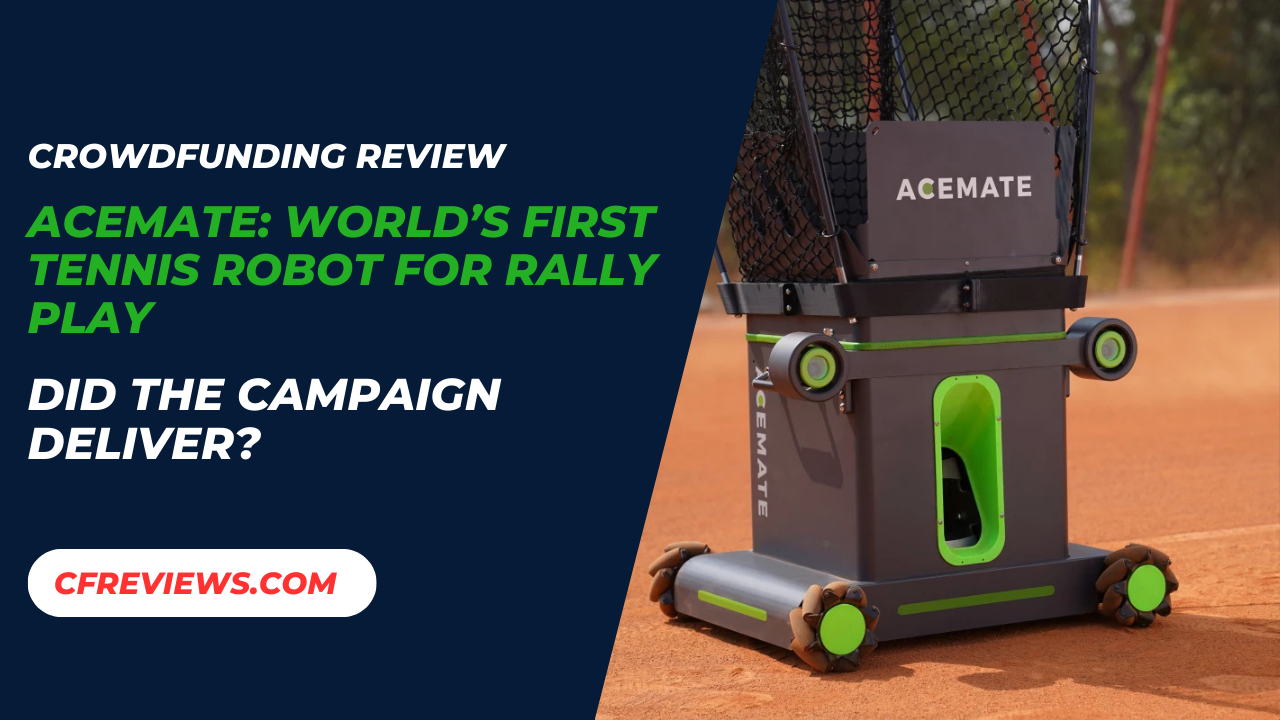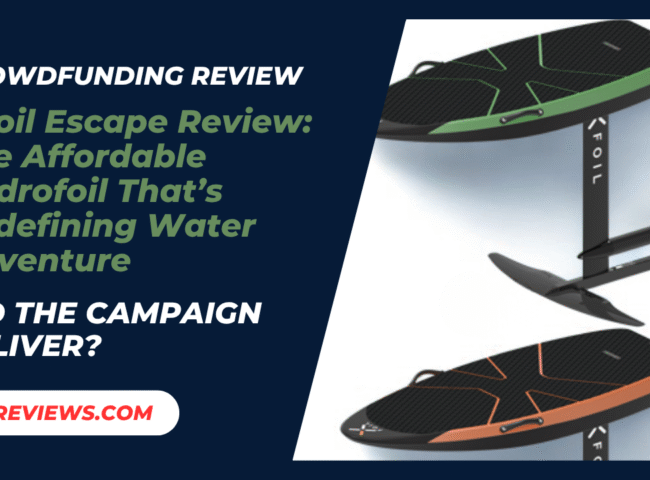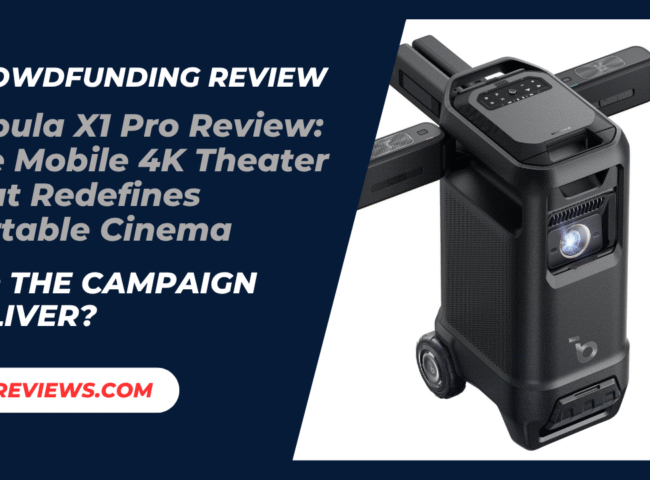Remember when Acemate crowdfunding campaign launched on kickstarter & indiegogo? It pitched itself as the world’s first rally-capable tennis robot. Unlike basic ball machines, Acemate promised AI shot tracking, 4k binocular vision, realistic topspin/slice returns and dynamic mobility. it wasn’t marketed as a feeder, it was billed as a robotic sparring partner. Now that deliveries are reportedly underway, the big question stands: Did Acemate live up to it’s promise, or was it just another crowdfunding fairy tale?
Overview of the project:
The Acemate crowdfunding campaign didn’t just get noticed, it smashed expectations, raising $2,400,693 pledged of $30,000 funding goal from1,551 backers on kickstarter, and $2,326,525 USD by 1,507 backers on indiegogo making a total of 3,058 backers worldwide. It was marketed as a breakthrough in solo tennis training, claiming to replicate a true rally environment rather than just firing balls. Backers were drawn by it’s promise to combine robotics, AI and mobility into a seamless training tool that works for pros, coaches and hobbyists alike. So what happened after the hype?
Rally Partner or Overhyped Ball Machine?
For a robot designed to mimic a human opponent, expectations were high. But like many crowdfunded sports tech projects, the gap between pitch videos and long term real-world performances is where the truth emerges.
What was Promised: Next-Level Solo Training
The campaign positioned Acemate as more than a tennis machine.
Core promises included:
- 4K dual-camera binocular vision for depth + speed tracking
- AI real time swing analysis with centimeter-level accuracy
- Dynamic rally simulation with adaptive pace, spin and angles.
- Human-like mobility powered by 4x Mecanum wheels and a ball net
- Performance reports based on shot technique and contact points.
On paper, that’s not just a product, it’s a training revolution.
Design & Usability: Plug -and-play or too complex?
Acemate’s big selling point was: “No setup, no wearables, just play”. But with advanced AI and robotics, questions remain:
- Is setup truly seamless or does calibration take time?
- Can casual hobbyists use it, or is it mainly for serious athletes and coaches?
- Will firmware updates keep improving the AI, or leave users stuck with early software quirks?
Ease of use will define whether Acemate becomes a mainstream tool or a niche pro gadget.
Mobility & Matches Simulation – Realistic Rally Partner or Robotic Feed?
Acemate’s Mecanum wheels and AI Pathing promised to replicate a match-like experience:
- Adjust positions like a sparring partner
- Feed variable pace, spin and shot angles
- Moves with flexibility across the baseline.
But will it feel like playing against another human, or just a high-tech machine dressed up as one?
Read more: Nireeka Spectrx Review: E-Bike Beast or Just Smoke and Marketing?
Final thoughts: Did Acemate Deliver?
Acemate raised over $4.7M and attracted global tennis attention. But as with all crowdfunded innovations success depends on delivery, usability and long term durability.
The verdict now rests on real world use:
- Did backers receive full functional units?
- Does the AI truly adapt to skill levels?
- Has it improved training or left players cautious?
Backers, your turn. if you supported Acemate, your story matters.
- Did it raised your game?
- Did it simulated match intensity?
- Or did it end up as a flashy gadget on the sidelines?
Because in the end, real innovation in crowdfunding isn’t proven by campaign videos, it’s proven on the court.
Visit Campaign:
Acemate: World’s First Tennis Robot for Rally Play







Leave feedback about this